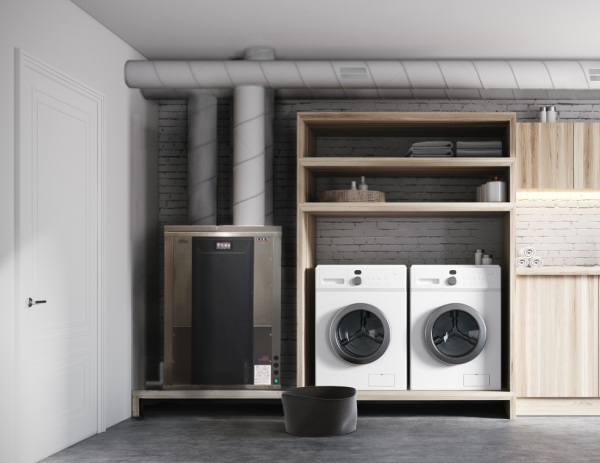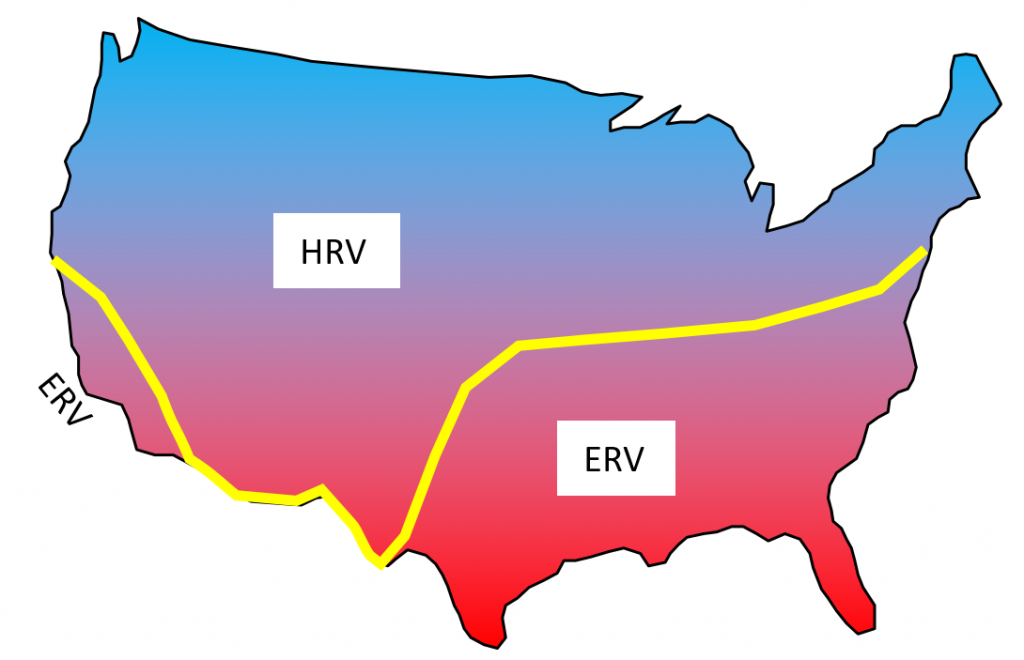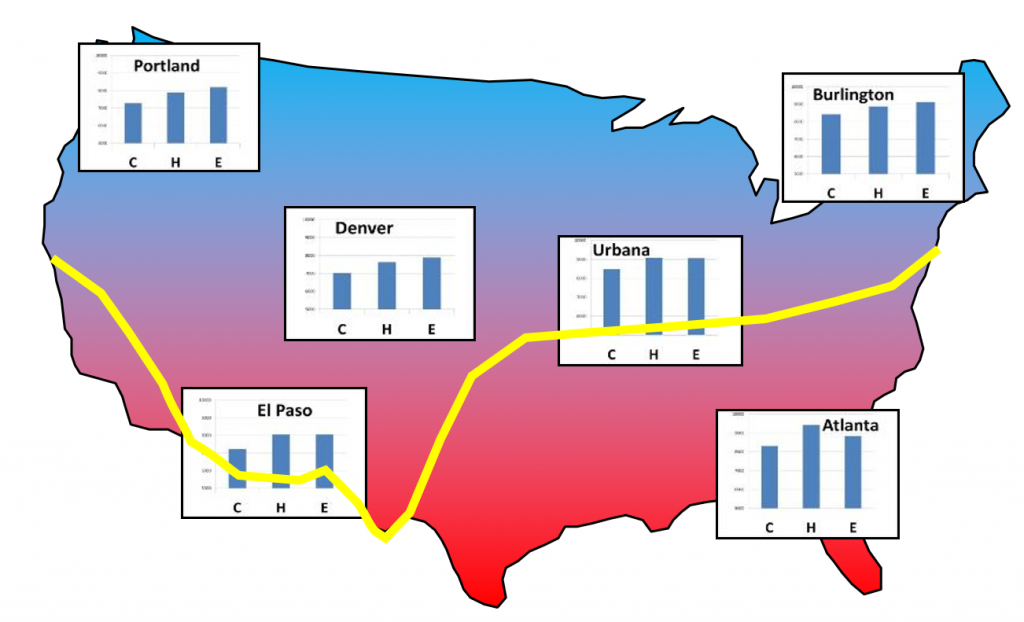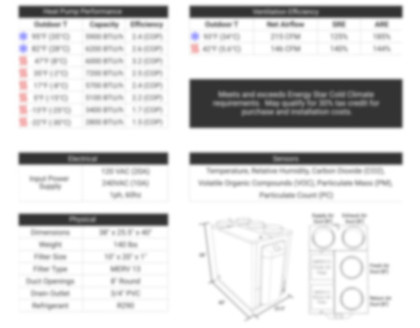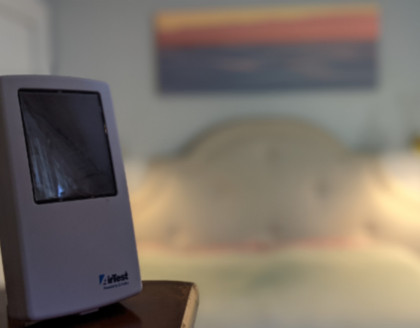Quite a bit of confusion exists today in the new field of residential ventilation. The choice between an HRV (heat recovery ventilator) and an ERV (energy or enthalpy recovery ventilator), for example, is met with contradictory advice primarily because of lack of comparative field data and inability of many residential design models to simulate HRVs and ERVs. Although energy is an important consideration, the primary purpose of fresh air ventilation is keeping home occupants healthy.
The CERV (pronounced “serve”), as a smart ventilator, gains much of its energy advantage over HRVs and ERVs with its ability to ventilate when needed, and to reduce ventilation when not needed. The CERV’s primary objective is serving your needs: keeping you as healthy and as comfortable as possible. Feeling good is much more valuable than a home’s overall energy cost.
HRVs and ERVs
HRVs and ERVs are similar devices except that an HRV transfers “heat” only while an ERV transfers heat and moisture. An exchanger “core” separates the incoming fresh air stream from the outgoing exhaust air stream. Two fans, a supply air fan and an exhaust air fan, are often incorporated into an HRV or ERV, however, some units use external fans. An ERV with two fans and a heat and moisture transfer core is shown above.
The second photograph is a picture of another ERV core. Corrugated layers of a thin material such as paper, plastic film or aluminum are sandwiched together with corrugations running in alternate directions for each layer in order to separate the supply and exhaust air streams. Heat is exchanged from the warmer air stream to the cooler air stream across the corrugation layers. If the thin separation material is “semi-permeable” to water vapor, moisture is also transferred from one air stream to the other. Notice how core layers can be stacked until a desired level of performance and exchange capacity are obtained.
Perfect Performance
The ideal operation limit for an HRV and an ERV is one in which the thermodynamic maximum amount of energy and moisture are transferred from one air stream to the other air stream. Striving for an HRV and ERV performance rating of 100% might seem to be a logical thing to desire, but the reality is that when coupled to a house in a particular climate with various sorts of appliances, water heaters, and comfort conditioning systems, an HRV or ERV performance level of 0% can be best! Imagine a cool summer evening when you would like the outdoor air brought in just the way it is outside. If a ventilation system doesn’t have the intelligence to determine when it is nicer outdoors, the nice outdoor air is deconditioned as it passes through an exchanger core. All regions of the US experience these nice periods, with some regions of the US reaching 8 months or more of the year when nice conditions occur frequently.
Determining which regions and house design benefit more from heat-only exchange versus heat and moisture exchange requires complex analyses. The map of the lower continental US indicates where the energy performance of a well-sealed, highly insulated, 2000sqft home favors HRVs (90% transfer performance) and ERVs (90% heat and 60% moisture). Fan power is accounted for in the computer simulations, and has been kept at 0.7W/cfm for both ERV and HRV units. Airflow has been set at 120cfm, sufficient for maintaining an average carbon dioxide concentration of 900ppm with an assumed occupancy of 4. This boundary changes, however, as the house design, occupancy and occupant behaviors vary.
CERV, HRV and ERV Performance Comparisons
The CERV is a smart ventilation system whose primary objective is maintaining excellent air quality in an energy efficient manner. By “smart”, we mean that the CERV’s sensors and algorithms are always assessing your indoor and outdoor conditions, and making decisions for maintaining air quality throughout the year in an energy efficient manner. Because of the unique heat pump architecture we developed for the CERV, it is never too cold or too hot outside for the CERV to operate in all climatic regions. HRVs and ERVs must avoid freezing the core material by either reducing fresh air ventilation (at a time when you need it most!) or switching on a high power electric resistance heater in order to preheat air. Electric resistance preheaters for HRVs and ERVs often use 750 Watts or more of power in comparison to the CERV’s inverter driven compressor’s 300 to 400 Watts of power at cold temperatures. The map shows small bar graphs marked “C” for CERV, “H” for HRV and “E” for ERV house annual energy requirements. Energy comparisons shown in the second map will be described in detail in our webinar.
Importance of Ventilation
While most people will not argue against ventilation, quantifying its importance has been difficult until now. For example, the adjacent figure shows United States trends in asthma and trends in residential building infiltration over the past three decades. During the past 30 years, asthma has more than doubled with an estimated cost of nearly $60B, more than ten times the energy cost of residential refrigerators.
We must be careful not to ascribe cause-and-effect to the correlation of the rising incidence of asthma to decreasing infiltration of our homes. Over the past 3 to 4 decades, however, we have immersed ourselves in a soup of chemicals in our personal care products, synthetic materials (paints, polymers, adhesives in our building materials and home furnishings), cleansers, pesticides, herbicides, fertilizers, indoor combustion pollutants, and other chemicals infused in the simple products of daily living. Is this growing pool of chemicals combined with decreased fresh air caused asthma to increase? Asthma seems to be leveling off as continued sealing of our homes occurs. Have we turned a corner, with companies using less formaldehyde and other noxious chemicals? Stay tuned as we unwittingly participate in this human experiment.
In addition to chemicals that may impact our health and feeling of well-being, recent research confirms that carbon dioxide impairs cognition (brain health). We have used our ZEROs (Zero Energy Residential Optimization software) residence modeling software to investigate the annual household energy cost over a range of indoor carbon dioxide concentrations. Human productivity value is based on a correlation model between human cognition performance and salary recently published by researchers at Harvard’s TH Chan School of Public Health.
The value of a human at home can be debated, but clearly, being productive at home is important just as being productive at work is important. A child who is unable to study at peak cognition costs society as whole as well as impacting the child directly. Family members who are less productive at home because of poor air quality will not make the best decisions, or be able to complete important household tasks, which potentially impacts their productivity at work, too. And, we spend nearly 70% of our time at home compared to 25% at work or school. Even if the human value is only 1% of the value in the figure, the value of a human still exceeds the associated ventilation cost.

